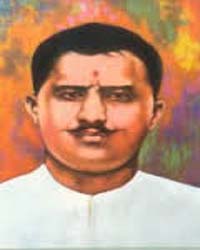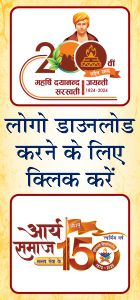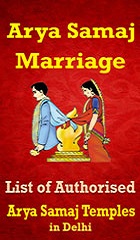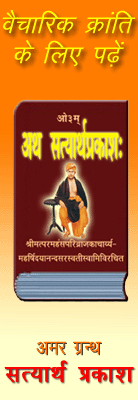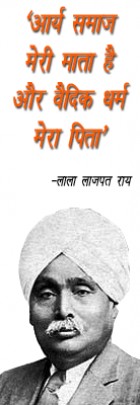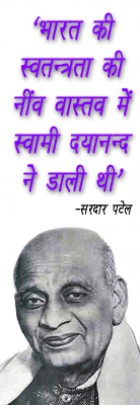Pandit Ram Prasad Bismil
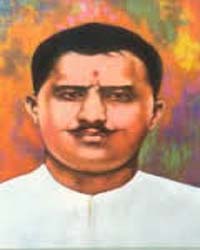
Father :
Pandit Murlidhar
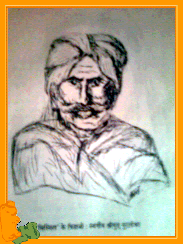
Mother :
Moolmati
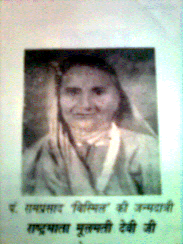
Ram Prasad ‘Bismil’ was an Indian revolutionary who participated in Mainpuri Shadyantra of 1918 and historical Kakori conspiracy Case of 1925 both against British Empire. Bismil was his pen-name. He was associated with Arya Samaj, Shahjahanpur where he got inspiration from Satyarth Prakash, a book written by Swami Dayanand Saraswati. He also got confidential connection with Lala Har Dayal through his guru Swami Somdev, who was a renowned preacher of Arya Samaj. Bismil was one of the founder members of the Hindustan Republican Association, a historical revolutionary organisation known for its ideology and constitution in black and white. He was a great poet-writer of Urdu & Hindi. Several inspiring patriotic verses are attributed to him. The famous poem Sarfaroshi ki Tamanna is also popularly attributed to him, although some of the so called progressive writers have remarked that ‘Bismil’ Azimabadi actually wrote the poem and Ram Prasad ‘Bismil’ immortalized it.But their remarks have no proof. A book titled as Sarfaroshi Ki Tamanna (4-Volumes) published in the Bismil Centenary Year-1997 from India is now available in so many libraries.
Ram Prasad ‘Bismil’ was born on 11 June 1897 at Shahjahanpur, a historical city of Uttar Pradesh. He was a Tomar Rajput.His grand father Narayan Lal had migrated from his ancestral village Barbai and settled down at a very distant place Shahjahanpur in U.P. Barbai was situated on the bank of river Chambal in Tomardhar region of the then estate of Gwalior in British period. Nowadays this village comes under Murena district of Madhya Pradesh. Father of Bismil Murlidhar was living in Khirni Bag Mohalla of Shahjahanpur city, where Ram Prasad was born. In the childhood Ram Prasad was sent to a local Primary School but he was very much adamant to learn Hindi because of an Hindi alphabet u which was taught as ‘u’ for ‘owl’.When his father Murlidhar could not make him learn u in spite of every effort, he decided to educate Ram Prasad through Urdu medium and he was admitted in Islamia School of Shahjahanpur. As soon as he was grown up he played in the hands of filthy students and some bad habits of reading romantic poetry books and cheap novels spoiled his career. When he failed twice in 7th standard of Urdu, he was admitted to an English school called Mission School of the city. After passing 8th standard from Mission School in First Division, he got admission in the Government School, Shahjahanpur. While studying in this school, he kept his pen-name as ‘Bismil’ and continued writing the patriotic poetry.
When he was a student of 9th class, he read in newspaper a news about the death sentence of Bhai Parmanand, a famous scholar and companion of Lala Har Dayal. Ram Prasad was hardly 18 years old at that time. In those days he used to go to the Arya Samaj Temple of Shahjahanpur daily, where Swami Somdev – a friend of Bhai Paramanand was staying. A revengeful anger had burst out in the mind of Ram Prasad through this incident. He immediately composed a poem in Hindi titled as My Birth and showed it to Swami Somdev. In that poem he had shown his commitment to root out the British Empire from India.
Swamiji read the poem with a deep sigh and kept mum for few minutes. After being normal, he spoke – “Ram Prasad ! I know that you are very much hurt by heart and accordingly I have chosen your pen-name as ‘Bismil’. Your poem is also full of patriotic feelings and your views are very clear but, my dear child ! it is not so easy to fulfill the commitment until a solid determination does not sustain in your heart and mind.” In spite of arguments and counter-arguments from Swamiji , Ram Prasad did not deviate from his commitment. When Swamiji saw a burning flame of revolution in his eyes, he advised him to prepare himself politically and go to Lucknow to participate actively in the next Congress of 1916.
Next year Ram Prasad left the school and went to Lucknow with his friends. Liberal group was not prepared to allow Moderate group for any type of welcome of Tilak in the city. Bismil along with a senior student of M.A. laid down the car of Tilak and lead the overwhelming procession of Bal Gangadhar Tilak in whole of the city. Ram Prasad was highlighted there and so many youths from all over India became his fans. They organized a group of youths and decided to publish a book. The book was written on the history of American independence in Hindi and it’s title was given America Ki Swatantrata Ka Itihas with the consent of Swami Somdev. This book was published with a fictitious name of Babu Harivans Sahai, B.A. and it’s publisher’s name was given as Somdev Siddhgopal Shukla. As soon as the book was published, the then U.P. Govt. proscribed it to be sold anywhere in the state.
Ram Prasad ‘Bismil’ formed a revolutionary organization in the name of Matrivedi and contacted Pt. Genda Lal Dixit who was a school teacher at Auraiya. Both of them organised youths of Etawah, Mainpuri, Agra and Shahjahanpur districts of United Province (now Uttar Pradesh) to strengthen the organisation. On 28 January 1918 ‘Bismil’ published a pamphlet titled as A Message to Countrymen and distributed it amongst public along with his poem Vow of Mainpuri. In order to collect funds for the party 3 actions of loot were conducted in 1918. Police was searching them in and around Mainpuri while they were selling the book proscribed by U.P. Govt in Delhi Congress of 1918. When police reached there ‘Bismil’ absconded with the books unsold. When he was planning another action of loot in between Delhi and Agra, a police team arrived and firing started from both the sides, but ‘Bismil’ was very cautious. He immediately jumped into the river Yamuna and swam underground in the water. Police and his companions thought that he would have died in the encounter. Pt. Genda Lal Dixit was arrested alongwith his other companions and he was kept in Agra fort from where Dixit fled away and lived underground in Delhi. A criminal case was filed against them which is known as Mainpuri Conspiracy against British King Emperor in the history. On 1 November 1919 the Judiciary Magistrate of Mainpuri B. S. Chris announced the judgement against all accused and declared Genda Lal Dixit and Ram Prasad ‘Bismil’ as absconder, because they could not be arrested by the police in spite of all efforts.
From 1919 to 1920 Bismil remained underground, for sometime in Rampur Jagir/Jahangir village of present Gautam Budh Nagar Distt, sometimes in Kosma of Mainpuri Distt, sometimes in Bah and Pinhat of Agra Distt. (all in the U.P. state). He also went to his paternal village Barbai in M.P. state to take some money from his mother. While living underground he wrote few books also. These books were Man Ki Lahar-a collection of poems, Bolshevikon Ki Kartoot-a revolutionary novel, Yogik Sadhan-a booklet of yoga defining how to create a firm resolve in one’s mind and Catherine or Swadhinta Ki Devi- a consigned autobiography of Catherine, the grand mother of Russian Revolution. Out of these books only Man Ki Lahar was a collection of poems written by ‘Bismil’ himself and his contemporary poets, whereas Bolshevikon Ki Kartoot and Yogik Sadhan were translated from Bangla and the Catherine or Swadhinta Ki Devi was fabricated from English. He also published all these books through his own resources under Sushilmala-a series of publication except one Yogik Sadhan which was given to a publisher who was absconded and could not be traced out . Now all these books have been searched by a scholar ‘Krant’ M. L. Verma and are available in the libraries. Catherine or Swadhinta Ki Devi and Yogik Sadhan are compiled and edited in Sarfaroshi Ki Tamanna (Vol- 3) whereas Man Ki Lahar and Bolshevikon Ki Kartoot are published separately.Another book of Pandit Ram Prasad ‘Bismil’ was published in the year 1929 after his death which was proscribed by British Raj in 1931. The name of this book was Kranti Geetanjali. It was kept reserved in the Imperial Library under their catalogue no 891431-B-541-K. In this number B stands for the name of author and K for the name of book. Archives of India got this book under their Accession No 961. Now this book has been published in India and is available in the libraries.
In February 1920, when all the prisoners of Mainpuri Conspiracy Case were released under govt. proclamation, ‘Bismil’ returned to his native place Shahjahanpur and met the District Authorities. They allowed Ram Prasad to live peacefully after taking an affidavit of undertaking from him declaring therein not to participate in any such revolutionary activity. He joined Bharat Silk Manufacturing Co as a manager for sometimes and after that started a business of silk sarees in the partnership of Banarsi Lal. Banarsi Lal and Ram Prasad ‘Bismil’ – both of them had been associated with the District Congress Committee of Shahjahanpur. Although Bismil earned name and fame in the business but he was not satisfied at all because his earlier commitment to get out British from India was not fulfilled.
In 1921 ‘Bismil’ attended Ahmedabad Congress along with a large number of volunteers from Shahjahanpur and occupied a place on the dias. A senior congressman Prem Krishna Khanna was also with him. He played an active role in the Congress with Maulana Hasrat Mohani and got the most debated proposal of Poorn Swaraj passed in the General Body meeting of Congress. Gandhiji, who was not in the favour of this proposal became quite helpless before the overwhelming demand of youths. It was another victory of Bismil against Liberal Group of Congress.He returned to Shahjahanpur and mobilised the youths of United Province for non-cooperation with the Govt. People of U.P. were so much influenced by the furious speeches and verses of Bismil that they became hostile against British Rule. In February 1922 some agitating farmers were killed in Chowri-Chowra by the police. This was the main cause which infuriated the general public. The police station of Chowri-Chowra was attacked by the move and 22 policemen were burnt alive. Gandhiji, without ascertaining the fact behind this incident, declared to stop the non-cooperation movement immediately. He did not take even a single executive committee member of the Congress into his confidence and acted as a party dictator. Ram Prasad ‘Bismil’ along with his group of youths strongly opposed Gandhiji in Gaya Congress of 1922. When Gandhiji resisted not to take back his decision the Congress party was divided into two groups- one liberal and the other rebellion. In January 1923, the rich group of party formed a new Swaraj Party under the joint leadership of Pt. Moti Lal Nehru and Chitt Ranjan Das whereas the young group who was representing the common public declared to form a Revolutionary Party under the leadership of Ram Prasad ‘Bismil’.
With the consent of Lala Har Dayal, Ram Prasad ‘Bismil’ went to Allahabad where he drafted the Constitution of Party with the help of Shachindra Nath Sanyal and another revolutionary of Bengal Dr. Yadu Gopal Mukherji. The name, aim, frame and claim of the organisation were typed on a Yellow Paper and a Constitutional Committee Meeting was conducted on 3 October 1924 at Kanpur in U.P. under the Chairmanship of Shachindra Nath Sanyal. In this meeting the name of the party was decided as Hindustan Republican Association and after a long discussion from others Ram Prasad ‘Bismil’ was declared the District Organiser of Shahjahanpur and Chief of Arms Division. An additional responsibility of Provincial Organiser of United Province (Agra and Oudh) was also entrusted to him. Shachindra Nath Sanyal, was anonymously nominated as National Organiser and another senior member Yogesh Chandra Chatterji, was given the responsibility of Coordinator, Anushilan Dal. After attending the meeting in Kanpur, both Sanyal and Chatterji left the U.P. and proceeded to Bengal.
A pamphlet titled The Revolutionary was published in January 1925 by a fictitious name of Vijay Kumar from some unknown place and was circulated all over India. It was a pamphlet of 4 pages wherein the programme or manifesto of the revolutionaries was declared with a promise to Indian public for equal opportunity to every man irrespective of social status high or low, rich or poor. Policies of Mahatma Gandhi were openly criticised and youths were called to join the organisation. Police was astonished to see the language of pamphlet and was searching its leader in Bengal. Shachin Nath Sanyal had gone to despatch this pamphlet in a bulk and was arrested in Bankura, West Bengal. Before Shachin’s arrest Yogesh Chandra Chatterji had also gone in the hands of police at Hawrah railway station of Calcutta in Bengal.
After arrest of both the senior organiser of ‘H.R.A.’ total responsibility to run the party had come on the shoulders of Ram Prasad ‘Bismil’. The District Organisers were demanding money. They were writing very sensitive letters to ‘Bismil’-”Pandit Ji ! we are dying with hunger, please do something.” Bismil was feeling himself guilty for their pitiable condition. He decided to collect money like Irish Revolutionaries through forcibly snatching from the rich people of society. So he executed two actions of looting the money, one at Bichpuri in Pilibhit Distt. and the other at Dwarkapur in Pratapgarh Distt of U.P., but not enough money was received in either of these actions.
These Mauser Pistols with wooden stock were used in Kakori Train Dacoity by Pandit Ram Prasad Bismil and his fellow partymen
Bismil executed a meticulous plan for looting the government treasury carried in a train at Kakori, near Lucknow in U.P. This historical event happened on August 9, 1925 and is known as the Kakori Train Robbery. Only 10 revolutionaries stopped the 8 Down Saharanpur-Lucknow passenger train at Kakori- a station just before the Lucknow Railway Junction. German made Mauser C96 semi-automatic pistols were used in this action. Ashfaq Ullah Khan, the lieutinent of the H.R.A. Chief Ram Prasad Bismil gave away his Mauser to Manmath Nath Gupta and engaged himself to break open the cash chest. Eagerly watching a new weapon in his hand, Manmath Nath Gupta fired the pistol and incidently a passanger Ahmed Ali was killed in this rapid action.The incident created a great upheaval in British India. The retribution was severe when more than 40 revolutionaries were arrested from all over India. As per official record of the British Govt, a criminal conspiracy case was filed against 28 active members of H.R.A. by the Special Magistrate Ainuddin after a long time. 21 persons were presented before Session Court of Special Judge A. Hamilton on 21 May 1926. Abbas Salim Khan, Banvari Lal Bhargava, Gyan Chattarji and Mohd. Ayuf were the assessors (legal advisors) of the Judge. On April 6, 1927 the verdict of court came out of the special court of Lucknow. This special court was established by the then British Government in the Ring Theatre- a famous building of Lucknow. That historical place was also demolished by the British Government later on in 1929 and the General Post Office was built over the land in 1929-1932.Court’s verdict was published in 115 pages and the charges were proved in such a manner that no body could escape from punishment.
Another supplementary case was filed against Ashfaq Ullah Khan and Shachindra Nath Bakshi in the court of Special Judge J.R.W.Vuynot. An appeal was filed in the then Chief Court of Oudh (now in U.P.) on 18 July 1927. A very senior advocate Pt. Jagat Narayan Mulla pleaded the case as public prosecutor on behalf of Govt whereas Ram Prasad ‘Bismil’ defended his case himself. He did not take any help from the Govt. On 22 August 1927 the Chief Court endorsed the original judgement with an exception of one or two punishments. A mercy appeal was filed in due course before the Provincial Governor of U.P. by the members of legislative council which was dismissed. Ram Prasad ‘Bismil’ wrote a letter to Pt. Madan Mohan Malviya on 9 September 1927 from Gorakhpur Jail. Madan Mohan Malviya sent a memorandum to the then Viceroy and Governor-General of India Edward Fredrick Lindley Wood with the signatures of 78 Members of Central Legislature, which was also turned down. On 16 September 1927 the final mercy appeal was forwarded to Privy Council at London as well as to the King Emperor through a famous lawyer of England Mr S.L.Polak but the British Government, who had already decided to hang them, sent their final decision to the India office of Viceroy that all the four condemned prisoners are now to be hanged till death by 19 December 1927 positively.
In an 18-month long drawn case, Pt.Ram Prasad ‘Bismil’, Ashfaq Ullah Khan, Thakur Roshan Singh and Rajendra Lahiri were sentenced to death under section 121(A), 120(B), 302 and 396 of Indian Penal Code. Pt. Ram Prasad ‘Bismil’ was hanged by the British Authorities on 19 December 1927 in the morning at Gorakhpur Jail, Ashfaq Ullah Khan at Faizabad Jail and Thakur Roshan Singh at Naini (Allahabad) Jail whereas fourth Rajendra Lahiri was hanged on 17 December 1927 (2 days before the scheduled date) at Gonda Jail all located in the present Indian state of Uttar Pradesh. He embraced the rope of execution by reciting vedic Hymn “Vishwani Deva.....”, and in his autobiography written in jail had expressed his desire to work for “Krinvanto Vishwamaryam” in his next birth. The dead body of Pt. Ram Prasad ‘Bismil’ was handed over to his parents Murlidhar and Moolmati. A huge rush of about 1.5 lakhs of people gathered from all over the country. They took the dead body of Bismil and carried it to the bank of Rapti under a grand procession, where the last funeral of this great martyr was performed under the proper Vedic Cremation System. The place, where the ritual obligations of Bismil were done was named by public as Rajghat. A new Transport Nagar has been developed in the side bye area of this place.

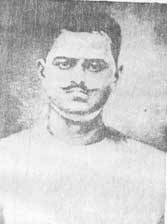
.jpg)
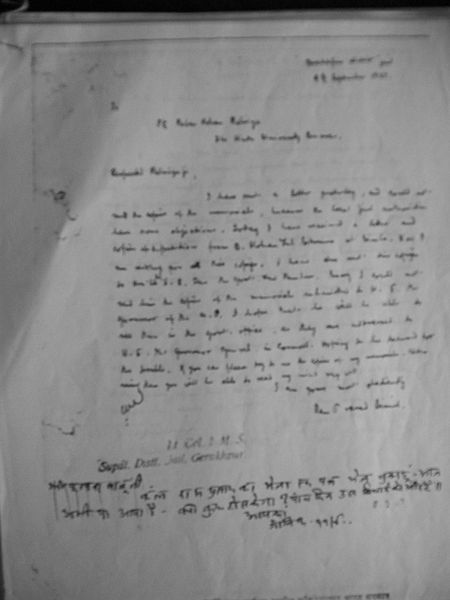
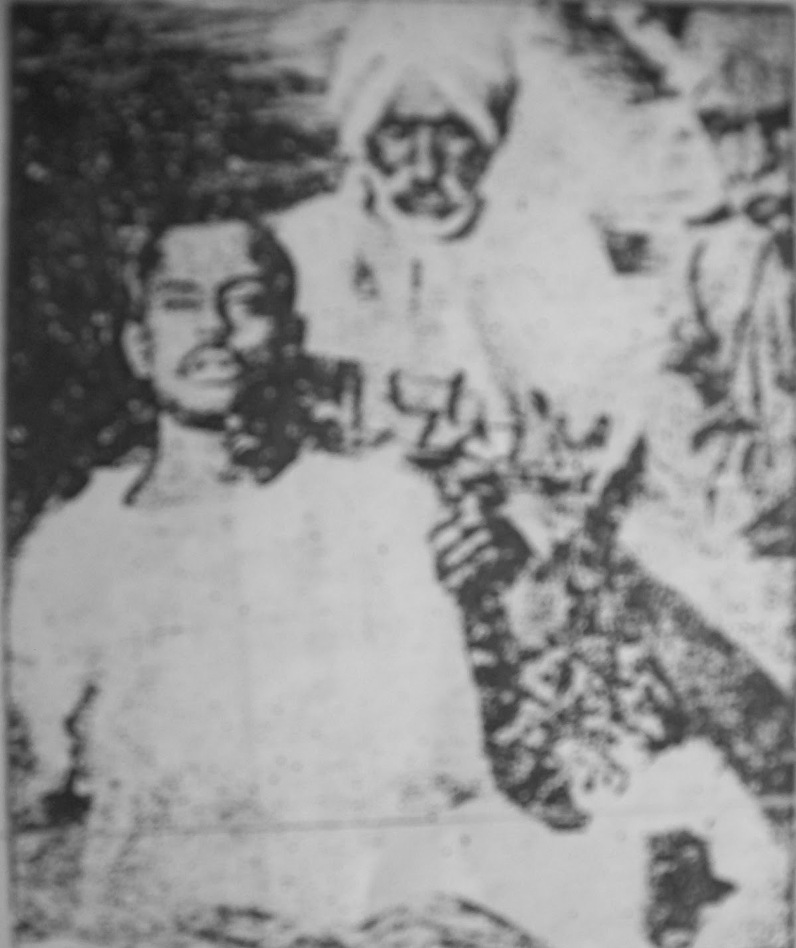
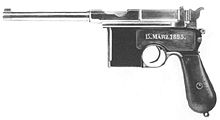
.jpg)
